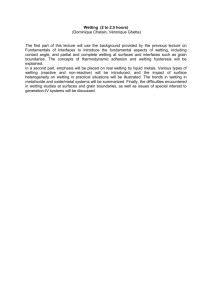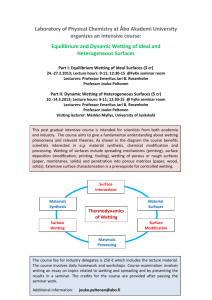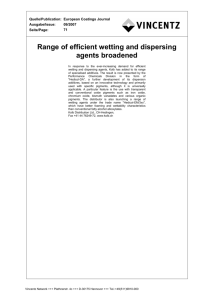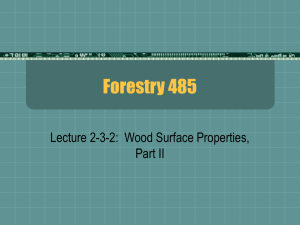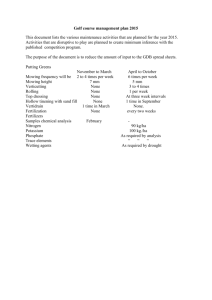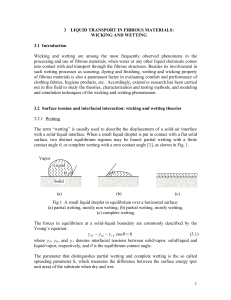Title: Wetting and Electrohydrodynamics of Soft Surfaces electrohydrodynamics, will be discussed.
advertisement
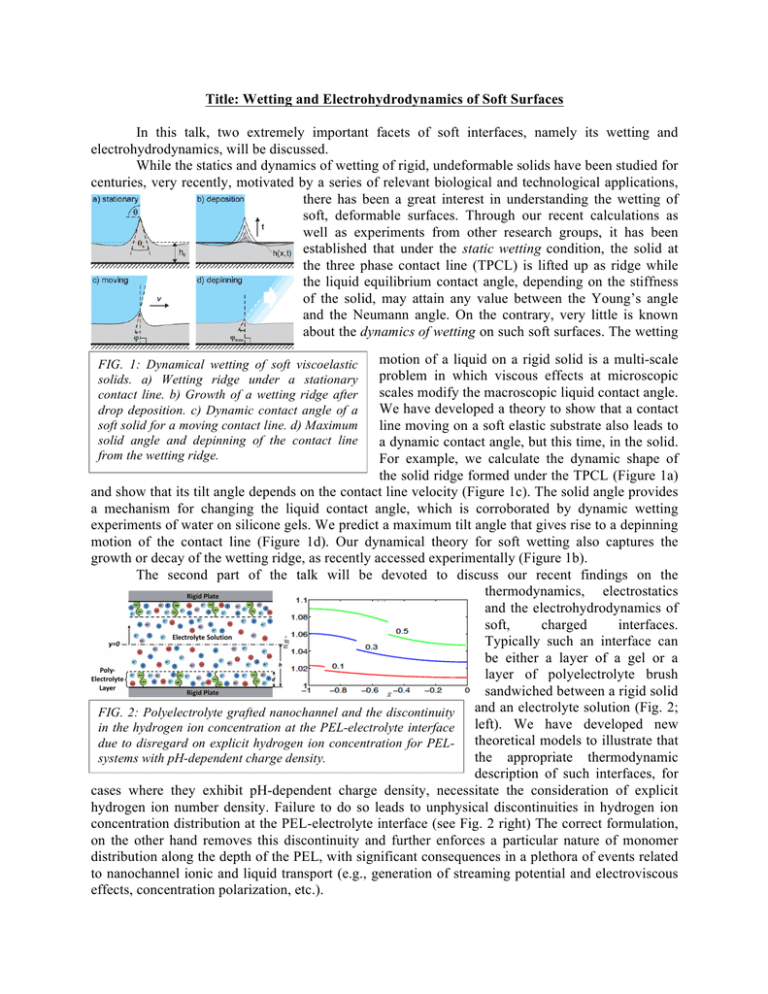
Title: Wetting and Electrohydrodynamics of Soft Surfaces In this talk, two extremely important facets of soft interfaces, namely its wetting and electrohydrodynamics, will be discussed. While the statics and dynamics of wetting of rigid, undeformable solids have been studied for centuries, very recently, motivated by a series of relevant biological and technological applications, there has been a great interest in understanding the wetting of soft, deformable surfaces. Through our recent calculations as well as experiments from other research groups, it has been established that under the static wetting condition, the solid at the three phase contact line (TPCL) is lifted up as ridge while the liquid equilibrium contact angle, depending on the stiffness of the solid, may attain any value between the Young’s angle and the Neumann angle. On the contrary, very little is known about the dynamics of wetting on such soft surfaces. The wetting motion of a liquid on a rigid solid is a multi-scale problem in which viscous effects at microscopic scales modify the macroscopic liquid contact angle. We have developed a theory to show that a contact line moving on a soft elastic substrate also leads to a dynamic contact angle, but this time, in the solid. For example, we calculate the dynamic shape of the solid ridge formed under the TPCL (Figure 1a) and show that its tilt angle depends on the contact line velocity (Figure 1c). The solid angle provides a mechanism for changing the liquid contact angle, which is corroborated by dynamic wetting experiments of water on silicone gels. We predict a maximum tilt angle that gives rise to a depinning motion of the contact line (Figure 1d). Our dynamical theory for soft wetting also captures the growth or decay of the wetting ridge, as recently accessed experimentally (Figure 1b). The second part of the talk will be devoted to discuss our recent findings on the thermodynamics, electrostatics and the electrohydrodynamics of ! soft, charged interfaces. Typically such an interface can be either a layer of a gel or a layer of polyelectrolyte brush sandwiched between a rigid solid and an electrolyte solution (Fig. 2; FIG. 2: Polyelectrolyte grafted nanochannel and the discontinuity left). We have developed new in the hydrogen ion concentration at the PEL-electrolyte interface theoretical models to illustrate that due to disregard on explicit hydrogen ion concentration for PELthe appropriate thermodynamic systems with pH-dependent charge density. description of such interfaces, for cases where they exhibit pH-dependent charge density, necessitate the consideration of explicit hydrogen ion number density. Failure to do so leads to unphysical discontinuities in hydrogen ion concentration distribution at the PEL-electrolyte interface (see Fig. 2 right) The correct formulation, on the other hand removes this discontinuity and further enforces a particular nature of monomer distribution along the depth of the PEL, with significant consequences in a plethora of events related to nanochannel ionic and liquid transport (e.g., generation of streaming potential and electroviscous effects, concentration polarization, etc.). FIG. 1: Dynamical wetting of soft viscoelastic solids. a) Wetting ridge under a stationary contact line. b) Growth of a wetting ridge after drop deposition. c) Dynamic contact angle of a soft solid for a moving contact line. d) Maximum solid angle and depinning of the contact line from the wetting ridge.
